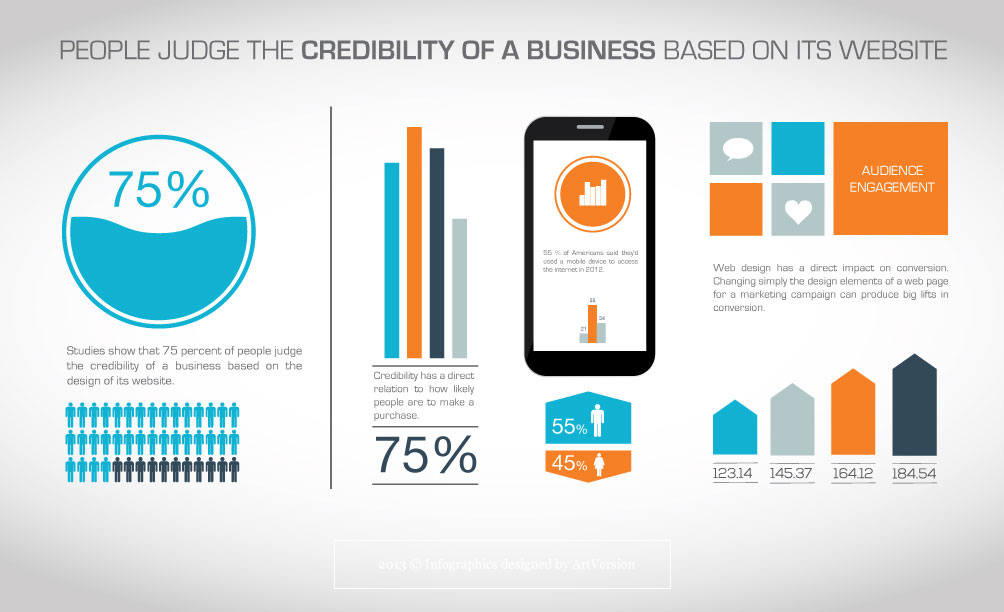Site Layout Essentials: Tips For Structure A User-Friendly Website
Site Layout Essentials: Tips For Structure A User-Friendly Website
Blog Article
Material Composed By-Scarborough Daugaard
When it involves internet site layout, ensuring user-friendliness is vital. From receptive design to streamlined navigation, every element plays a vital role in developing a site that accommodates your audience's demands. But what about the finer information that can make or damage an individual's browsing experience? Stay tuned as we uncover some often-overlooked pointers that can raise your website's functionality to the following degree, making it really attract attention in the electronic landscape.
Relevance of Responsive Style
Responsive design is a vital element of modern-day internet site advancement. Guaranteeing your site is responsive methods that it can adapt to various screen sizes and gadgets, offering a smooth experience for customers.
With the enhancing use smart devices and tablet computers to access the web, having a receptive style is necessary for getting to a bigger target market. It helps in improving user experience by making your website simple to navigate and continue reading any kind of gadget.
Furthermore, https://www.google.com/search?q=Tipping+Point+Digital&ludocid=15020801446772368566&lpsid=CIHM0ogKEICAgID2xJKhowE&source=sh/x/localposts/m1/1&lsig=AB86z5XS5EPiIMwVdXEAgQuHo39I&shndl=-1&kgs=7861077bf63b63b1 can favorably affect your internet search engine positions, as search engines like Google prioritize mobile-friendly sites. By having a receptive style, you're additionally future-proofing your site, as new devices with differing screen dimensions continue to arise.
Simplify Navigation Framework
To improve individual experience and assist in easy access to information on your site, simplifying the navigating structure is extremely important. When making your website, focus on producing a clear and instinctive navigation menu that helps visitors locate what they're searching for quickly.
visit this page of menu items to the fundamentals, grouping related pages together to stay clear of frustrating individuals. Usage detailed tags that clearly indicate the content of each page, making it simpler for individuals to comprehend where each link will take them.
Take into consideration applying dropdown menus for subcategories to stop jumbling the primary navigating bar. Additionally, include a search bar plainly on the page for individuals that like searching for particular info.
Prioritize mobile responsiveness in your navigation layout to ensure easy accessibility on all gadgets.
Maximize Web Page Load Rate
Improving page load rate is crucial for keeping site visitors on your web site. Slow-loading pages annoy users and can bring about high bounce rates. To maximize web page lots rate, begin by enhancing pictures. Press photos without jeopardizing top quality to decrease their data sizes.
In addition, enable browser caching to store frequently accessed sources locally, speeding up tons times for returning site visitors. Minify CSS, JavaScript, and HTML files by eliminating unneeded characters, comments, and formatting, improving tons speed.
Take into consideration utilizing a content distribution network (CDN) to disperse your internet site's web content throughout multiple servers worldwide, decreasing latency for users accessing your website from different locations. Finally, restrict using third-party manuscripts and plugins, as they can considerably impact tons times.
Conclusion
Finally, by including responsive style, simplifying navigating, and enhancing web page load rate, you can create a straightforward internet site that attract a bigger target market and enhances customer experience. These essential elements make sure that visitors can conveniently gain access to and browse your website across various devices, resulting in enhanced engagement and contentment. By focusing on these vital elements, you can build an effective site that keeps users returning for even more.
